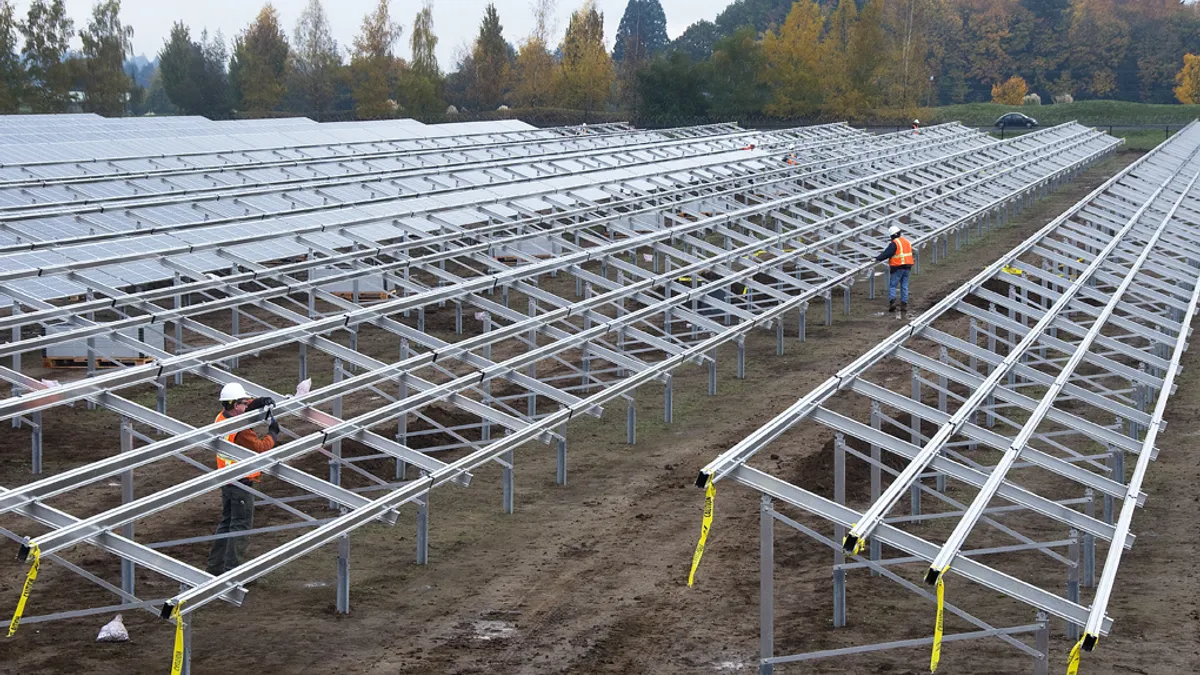Dive Brief:
- First Solar, the biggest U.S. manufacturer of solar modules and one of the world’s biggest utility-scale solar developers, became a “minority but significant owner” in the Clean Energy Collective (CEC) in 2014 to take advantage of the emerging community solar sector.
- First Solar said community solar is "infinitely scaleable" whereas rooftop solar potential is "somewhat limited," ReCharge reports.
- First Solar’s purchase of CEC signals a new approach to the solar market. Community solar sells at retail rates to customers that do not have access to rooftops suitable for solar.
Dive Insight:
When First Solar bought into CEC, the companies calculated that only about a quarter of all roofs are suitable for solar and 40% of those roofs are occupied by renters, making the market for community solar about seven times bigger than the rooftop solar market.
First Solar's cadmium telluride thin-film modules are lower cost and lower efficiency, making them more competitive for utility-scale projects. The same qualities disadvantage First Solar’s modules in the rooftop solar sector, where space is at a premium, against SunPower’s high efficiency modules or even average efficiency modules from tier one manufacturers like Trina or Yingli.
CEC leads the U.S. community solar sector with 37 megawatts of installed capacity in 51 projects involving 19 separate utilities across 8 states. It originated a business model based on an up-front payment for panels from subscribers. Its new SolarPerks program in Massachusetts requires no up-front payment, which is community solar’s other major business model.
SunShare, the second biggest U.S. community solar developer, just partnered in Minnesota with Mortenson Construction, one of the biggest U.S. renewables engineering, procurement, and construction contractors. Its business model requires no up-front payment and is based on a contracted amount of electricity at a per kilowatt-hour rate.














